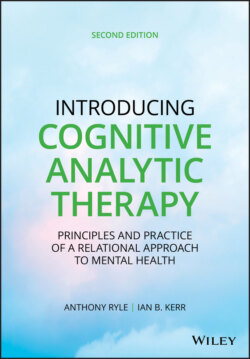Читать книгу Introducing Cognitive Analytic Therapy - Anthony Ryle - Страница 31
The Development of the Basic Model of Practice
ОглавлениеThe habit of showing patients the accounts of their assessment interviews and of writing down the agreed list of identified problems and problem procedures had been established from the beginning as part of the attempt to be as open and non‐mysterious as possible. This led on to the present practice of covering the same ground in a reformulation letter addressed directly to the patient. (These were initially referred to as “prose reformulations” to distinguish them from the TP and TPP lists—not because verse was an option!) These letters are reconstructions of the often jumbled and perplexing stories told by patients. They summarize key formative experiences and events in the past and suggest, in a non‐blaming way, how the negative patterns learned from early experiences are being repeated, or how alternative patterns developed in order to avoid these early ones have themselves become restrictive or damaging.
Working on the basis of the PSORM, the patterns identified as traps, dilemmas, and snags (various RRPs) will be linked to the individual's repertoire of RRs. In some cases, deriving the dilemmas, traps, and snags from the history and the discussion of responses to the Psychotherapy File can be a helpful way to start the reformulation process. Perhaps more often an immediate reflection on, and possibly initial rough mapping of, the role patterns evident in the patient's account of early experiences and current relationships, including “in the room” feelings and enactments, may be helpful. This is akin to the approach described by Potter (2017) as “map and talk”. However, ideally the two approaches are mutually complementary.
